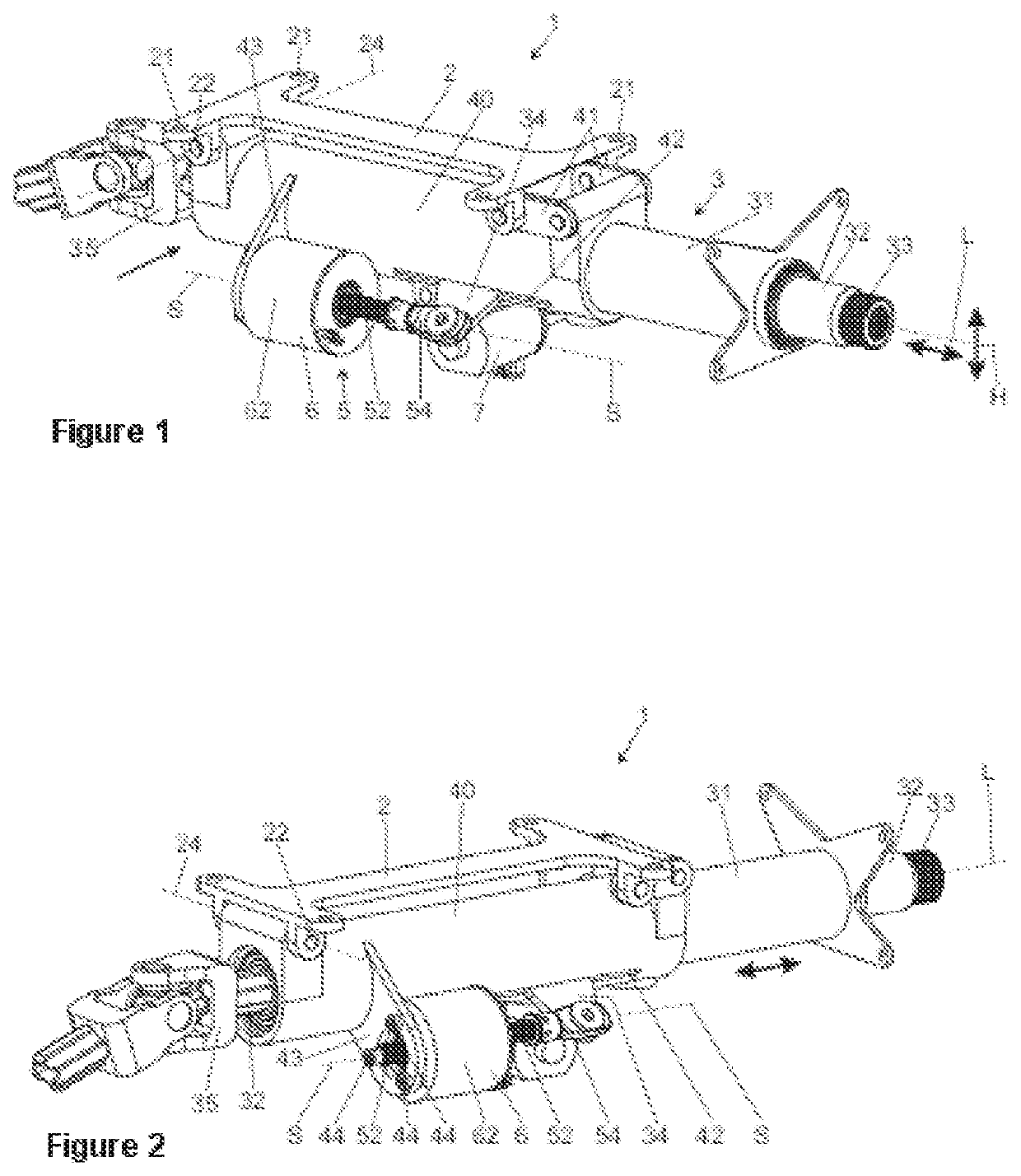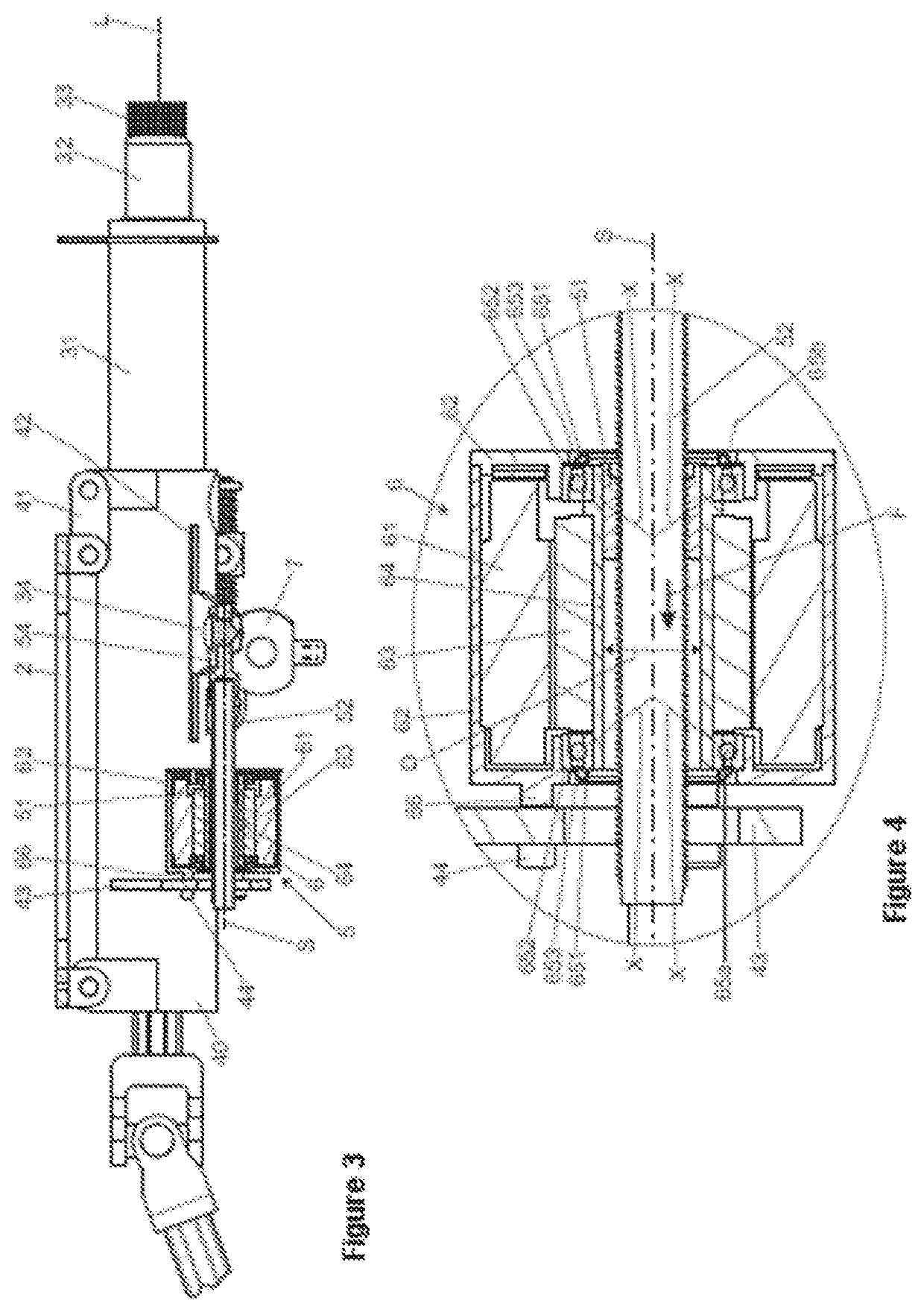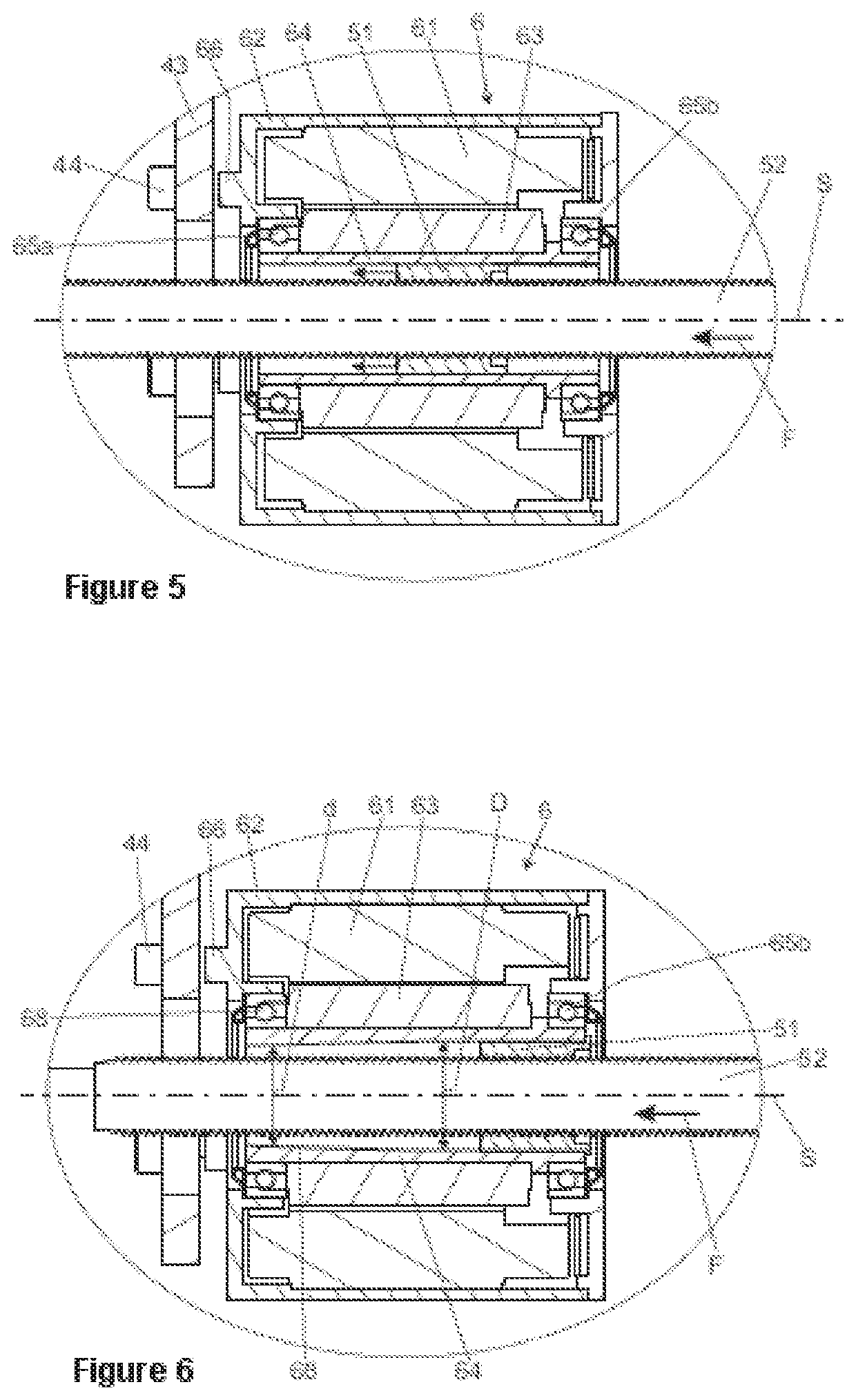Steering column for a motor vehicle
a technology for steering columns and motor vehicles, applied in the direction of mechanical energy handling, dynamo-electric components, transportation and packaging, etc., can solve the problems of only being implemented with high complexity, and cannot be implemented, and achieve the effect of low complexity, low cost and high drive torqu
- Summary
- Abstract
- Description
- Claims
- Application Information
AI Technical Summary
Benefits of technology
Problems solved by technology
Method used
Image
Examples
first embodiment
[0059]On account of the described disposal of the spindle nut 51 in the rotor shaft 64, an energy absorbing installation in a first embodiment is implemented in the embodiment shown in FIG. 4. In the event of a crash, for example in the event of a frontal collision, a high force F in the direction of the longitudinal axis L on account of a body impacting the steering wheel is introduced by way of the steering spindle 32 into the internal casing tube 31, and by way of the transmission element 34 is transmitted to the threaded spindle 52. This force F, also referred to as the crash force, in the direction of the spindle axis S is directed by way of the spindle nut 51 into the rotor shaft 64, and by way of the bearing 65a, b and the stator housing 62 on the support console 43 is finally absorbed on the external casing tube 40. Consequently, as is plotted in FIG. 4, the crash force F acts in the axial direction on the connection between the spindle nut 51 and the rotor shaft 64.
[0060]Wh...
third embodiment
[0067]A third embodiment is illustrated in FIGS. 7 to 9, wherein the steering column 1 of FIGS. 7 to 9 has a construction which is identical to that of the steering column from FIGS. 1 to 5, wherein the difference lies in the space-saving and compact configuration of the adjustment drive 5 which can be seen in the cross-sectional view of FIG. 8, which shows a section A-A from FIG. 7, as well as in the schematic perspective view of FIG. 8, the stator housing 62 having been omitted for improved clarity in the latter. A particularity of the illustrated drive motor 6 in comparison to the drive motor 6 illustrated in FIGS. 1 to 5 is the asymmetrically shaped stator 61 which on the circumference thereof that faces the casing unit 4, or the longitudinal axis L, respectively, has a radial concavity 67 which enables a relatively large stator diameter for a high motor torque to be predefined and to nevertheless keep the spacing between the spindle axis S and the longitudinal axis L relatively...
second embodiment
[0068]A drive motor 6 in a second embodiment is separately illustrated in FIG. 10 in a cross-sectional view as in FIG. 8, and in FIG. 11 in an exploded illustration exploded in the direction of the spindle axis S, wherein the actuator unit has been omitted for improved clarity. The individual parts having identical functions herein are provided with the same reference signs.
[0069]In a refinement of the first embodiment, the drive motor 6 has two radial concavities 67 which in terms of the spindle axis S are formed so as to be opposite in the circumference of the stator housing 62. As in the first embodiment, said concavities 67 in the cross-sectional profile form recesses in the shape of segments of a circle. The concavities 67 can in each case have the same cross section, as is illustrated, and be disposed so as to be symmetrical in terms of the spindle axis S. The quiet running can be improved on account thereof. Moreover, asymmetrical arrangements as well as, additionally or alte...
PUM
 Login to View More
Login to View More Abstract
Description
Claims
Application Information
 Login to View More
Login to View More - R&D
- Intellectual Property
- Life Sciences
- Materials
- Tech Scout
- Unparalleled Data Quality
- Higher Quality Content
- 60% Fewer Hallucinations
Browse by: Latest US Patents, China's latest patents, Technical Efficacy Thesaurus, Application Domain, Technology Topic, Popular Technical Reports.
© 2025 PatSnap. All rights reserved.Legal|Privacy policy|Modern Slavery Act Transparency Statement|Sitemap|About US| Contact US: help@patsnap.com



